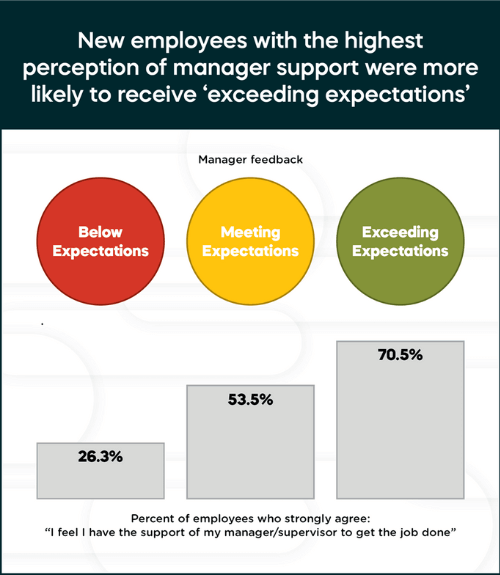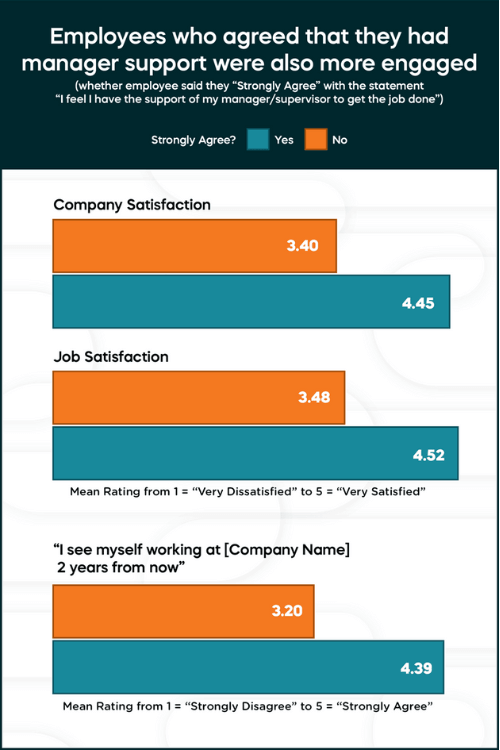- Solutions
- Products
- Community
- Resources
- Company
Create incredible candidate experiences that communicate your brand, mission, and values with recruitment marketing solutions.
Learn moreCommunicate effectively and efficiently with the candidates that can drive your business forward.
Learn moreSelect the right candidates to drive your business forward and simplify how you build winning, diverse teams.
Learn moreHelp your best internal talent connect to better opportunities and see new potential across your entire organisation.
Learn moreCommunicate collectively with large groups of candidates and effectively tackle surges in hiring capacity.
Learn moreAccess tools that help your team create a more inclusive culture and propel your DEI program forward.
Learn moreRebound and respond to the new normal of retail with hiring systems that are agile enough to help you forge ahead.
Learn moreAccelerate the hiring of key talent to deliver point of care and support services that meet and exceed your promise of patient satisfaction.
Learn moreAttract and engage candidates with technical competencies, accelerate hiring for much-needed skills, and advance expertise within your valued workforce.
Learn moreSimplify how you recruit finance, insurance, and banking candidates with a unified platform built to match top talent with hard-to-fill roles.
Learn moreYour business strategy depends on your people strategy. Keep both in lockstep with the iCIMS Talent Cloud.
Learn moreBuild an engaging, high-converting talent pipeline that moves your business forward.
Learn moreDeliver the innovation your talent team needs, along with the global scale and security you demand.
Learn moreDeliver tailored technology experiences that delight users and power your talent transformation with the iCIMS Talent Cloud.
Learn moreThe #1 ATS in market share, our cloud-based recruiting software is built for both commercial and large, global employers.
Learn more Talk to salesAttract the best talent for your business with powerful, on-brand career websites that excite candidates and drive engagement.
Learn more Talk to salesCombine behavior-based marketing automation with AI insights to build talent pipelines, engage candidates with multi-channel marketing campaigns, and automatically surface the right talent for the job.
Learn more Talk to salesEmpower candidates with automated self-service, qualification screening, and interview scheduling through an AI-enabled digital assistant.
Learn more Talk to salesSimplify employee onboarding with automated processes that maximize engagement and accelerate productivity.
Learn more Talk to salesRecruit in the modern world and expand your reach with built-in virtual interviewing.
Learn more Talk to SalesFocus on qualifying candidates faster with fully integrated language assessments.
Learn more Talk to SalesImprove employee experience, retention, and reduce internal talent mobility friction with the iCIMS Opportunity Marketplace.
Learn more Talk to salesCompliment your sourcing and engagement efforts with sophisticated lead scoring and advanced campaign personalization.
Learn more Talk to salesModernize, streamline, and accelerate your communication with candidates and employees.
Learn more Talk to salesTransform the talent experience by showcasing your authentic employer brand through employee-generated video testimonials.
Learn more Talk to salesGive your business a competitive edge with a complete solution for creating personalized, timely, and accurate digital offer letters that inspire candidates to want to join your team.
Learn more Talk to SalesSimplify recruiting, dynamically engage talent, and reduce hiring bias with job matching and recruiting chatbot technology.
Learn more Talk to salesThe #1 ATS in market share, our cloud-based recruiting software is built for both commercial and large, global employers.
Learn more Talk to salesAttract the best talent for your business with powerful, on-brand career websites that excite candidates and drive engagement.
Learn more Talk to salesCombine behavior-based marketing automation with AI insights to build talent pipelines, engage candidates with multi-channel marketing campaigns, and automatically surface the right talent for the job.
Learn more Talk to salesEmpower candidates with automated self-service, qualification screening, and interview scheduling through an AI-enabled digital assistant.
Learn more Talk to salesSimplify employee onboarding with automated processes that maximize engagement and accelerate productivity.
Learn more Talk to salesCompliment your sourcing and engagement efforts with award-winning lead scoring and advanced campaign personalization.
Learn moreImprove employee experience, retention, and reduce internal talent mobility friction with the iCIMS Opportunity Marketplace.
Learn more Talk to salesModernise, streamline, and accelerate your communication with candidates and personnel.
Learn more Talk to salesTransform the talent experience by showcasing your authentic employer brand through employee-generated video testimonials.
Learn more Talk to salesSimplify recruiting, dynamically engage talent, and reduce hiring bias with job matching and recruiting chatbot technology.
Learn more Talk to salesHow PRMG attracts 50% more applicants for niche finance roles with the iCIMS Talent Cloud.
Learn moreThousands strong, our global community of talent professionals includes creatives, innovators, visionaries, and experts.
Learn moreTogether we’re creating the world’s largest ecosystem of integrated recruiting technologies.
Learn morePartner with our global professional services team to develop a winning strategy, build your team and manage change.
Learn moreExplore our network of more than 300 certified, trusted third-party service and advisory partners.
Learn moreExpert guidance about recruitment solutions, changes in the industry, and the future of talent.
Learn moreExpert guidance about recruitment solutions, changes in the industry, and the future of talent.
Learn moreStay up to date with the latest terminology and verbiage in the HR software ecosystem.
Learn morePartner with iCIMS to build the right strategies, processes, and experience to build a winning workforce.
Learn moreThe iCIMS Talent Cloud delivers a secure, agile, and compliant platform designed to empower talent teams, job seekers, and partners with advanced data protection and privacy.
Learn moreWatch the recording of our latest webinar looking at key findings from a recent study and explore short-term and long-term solutions for the talent crisis in 2022 and beyond.
Watch on-demandView press releases, media coverage, and the latest hiring data. See what analysts are saying about iCIMS.
Learn moreiCIMS is the Talent Cloud company that empowers organizations to attract, engage, hire, and advance the talent that builds a winning workforce.
Learn moreGet to know the award-winning leadership team shaping the future of the recruiting software industry.
Learn moreWe believe the future of work isn't something that "happens" to you. It's something you create. We actively create the future of work with our customers every day.
Learn moreStreamline your tech stack and take advantage of a better user experience and stronger data governance with ADP and the iCIMS Talent Cloud.
Learn moreThe combined power of iCIMS and Infor helps organizations strategically align their business and talent objectives.
Learn moreOur award-winning partnership with Microsoft is grounded in a shared desire to transform the workplace and the hiring team experience.
Learn moreOur partnership with Ultimate Kronos Group (UKG) supports the entire talent lifecycle by bringing frictionless recruiting solutions to UKG Pro Onboarding.
Learn moreLet’s get in touch. Reach out to learn more about iCIMS products and services.
Learn more
“Quiet Quitting” is the new term for employees deliberately doing the least amount required at work (or perceived as doing the minimum), as opposed to those who are actively engaged and exceeding expectations. A recent survey conducted by ResumeBuilder estimates that those who are doing the “bare minimum” at work – meeting the criteria for “quiet-quitters” – now comprise 21% of the US workforce. But alarmingly, 80% of those surveyed indicated that they felt “burned out,” possibly contributing to the conditions for the quiet-quitting trend to grow.
The term ‘quiet quitting’ has become a trending topic on social media platforms from TikTok to LinkedIn, but according to some sources, quiet quitting is not a new phenomenon. Organizational psychologist Adam Grant suggests that “quiet quitting” is just a new buzzword for employee neglect: a predictable response when employees feel dissatisfied with their work but are unable to either quit or to effectively speak out for change. Neglect, Grant argues, most often occurs in response to the behavior of managers.
A lack of managerial guidance for employees could be the problem, as could a lack of trust in employees, many of whom are working remotely. As Karen Bannan writes in a SHRM article, “The more leaders micromanage, the more people are going to do things that can be categorized as quiet quitting.”
Data collected using SkillSurvey may lend some insight into the nature of this trend, as well as how to counter it among new hires. Employee responses were paired with their manager’s responses; specifically, the extent to which the manager felt that the employee’s work behavior did not meet, met, or exceeded their expectations. The sample consisted of 243 employees (individual contributors) who were on the job no longer than 120 days and were assessed by their managers between 90 and 120 days after their start date.
The percentage of employees whose work behavior met expectations was 53%. The work behavior of 39% was seen as exceeding expectations, while that of 8% was deemed as below expectations.
Among the 14 engagement drivers rated by employees on the survey, several positively correlated with how well their work behavior met their manager’s expectations. For example, whether employees felt their work made a meaningful contribution to the company, or whether they had flexibility in their work schedule. But the one engagement driver that correlated the strongest with manager ratings of their work behavior was how supported the employee felt by their manager.
The percentage of employees who said they “strongly agree” to the statement, “I feel I have the support of my manager/supervisor to get the job done,” varied dramatically with their manager’s assessment of their work behavior, as seen in the figure below.

Employee ratings of manager support were also positively associated with the employee’s satisfaction with their company, their job, and their intent to stay at the company for at least two years. While these associations do not necessarily imply that a lack of manager support causes poor work behavior (it’s possible that poorly-performing employees may elicit less manager support, for instance) or lower satisfaction overall, they are suggestive of a workplace issue ripe for intervention and improvement.

Whether quiet quitting is a new phenomenon or a rebranded symptom, organizations should maximize the number of employees who are fully engaged and excel in their work. Employee engagement is a broad but critical target for organizations hoping to lower employee neglect, increase performance and tenure, and maximize productivity.
Our data suggests an even finer bullseye: ensure employees feel supported by their managers. This might just lead to greater employee satisfaction at work, longer tenure on the job, and a renewed commitment to going above and beyond.
For more information on iCIMS SkillSurvey, click here.




